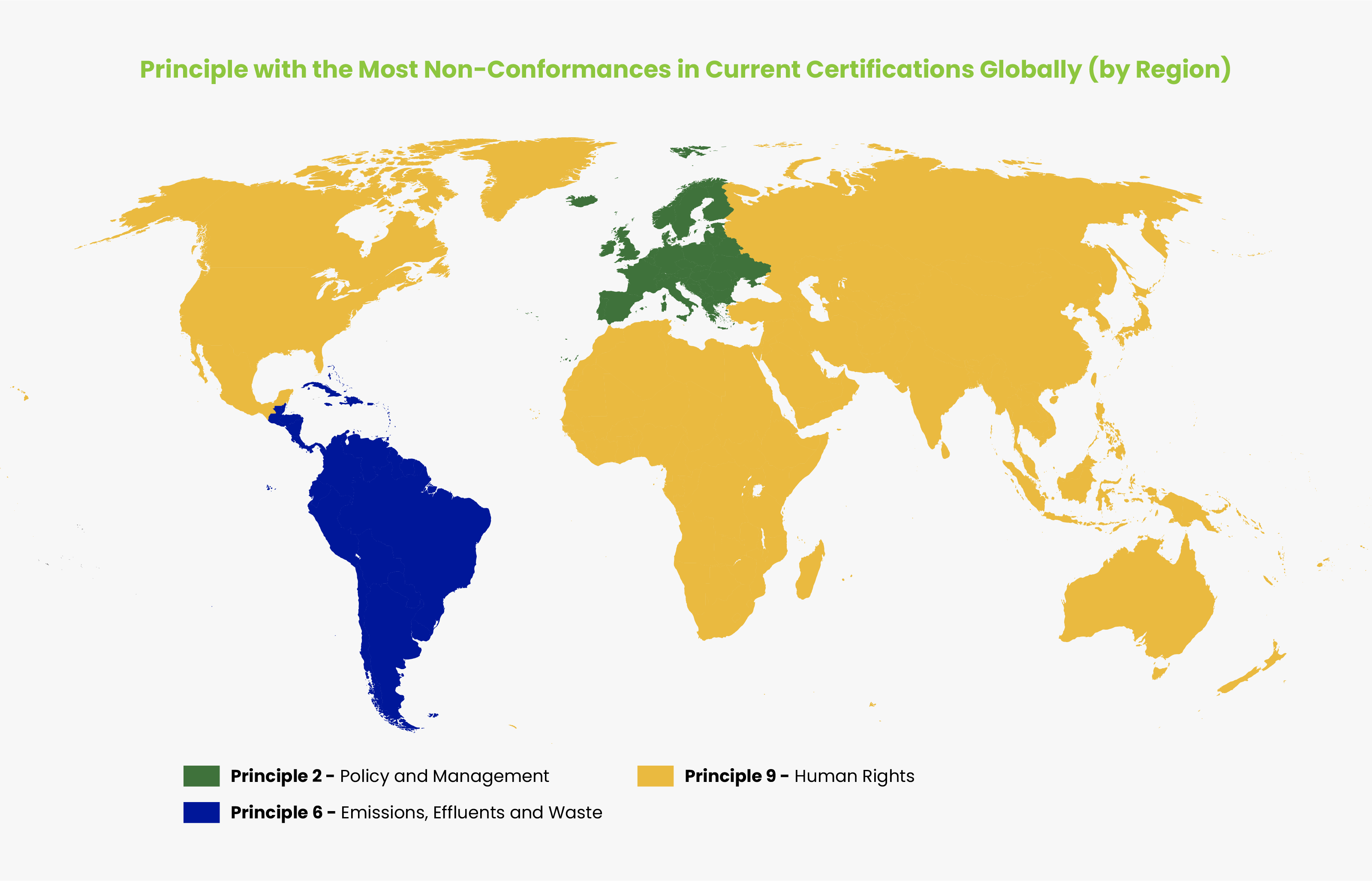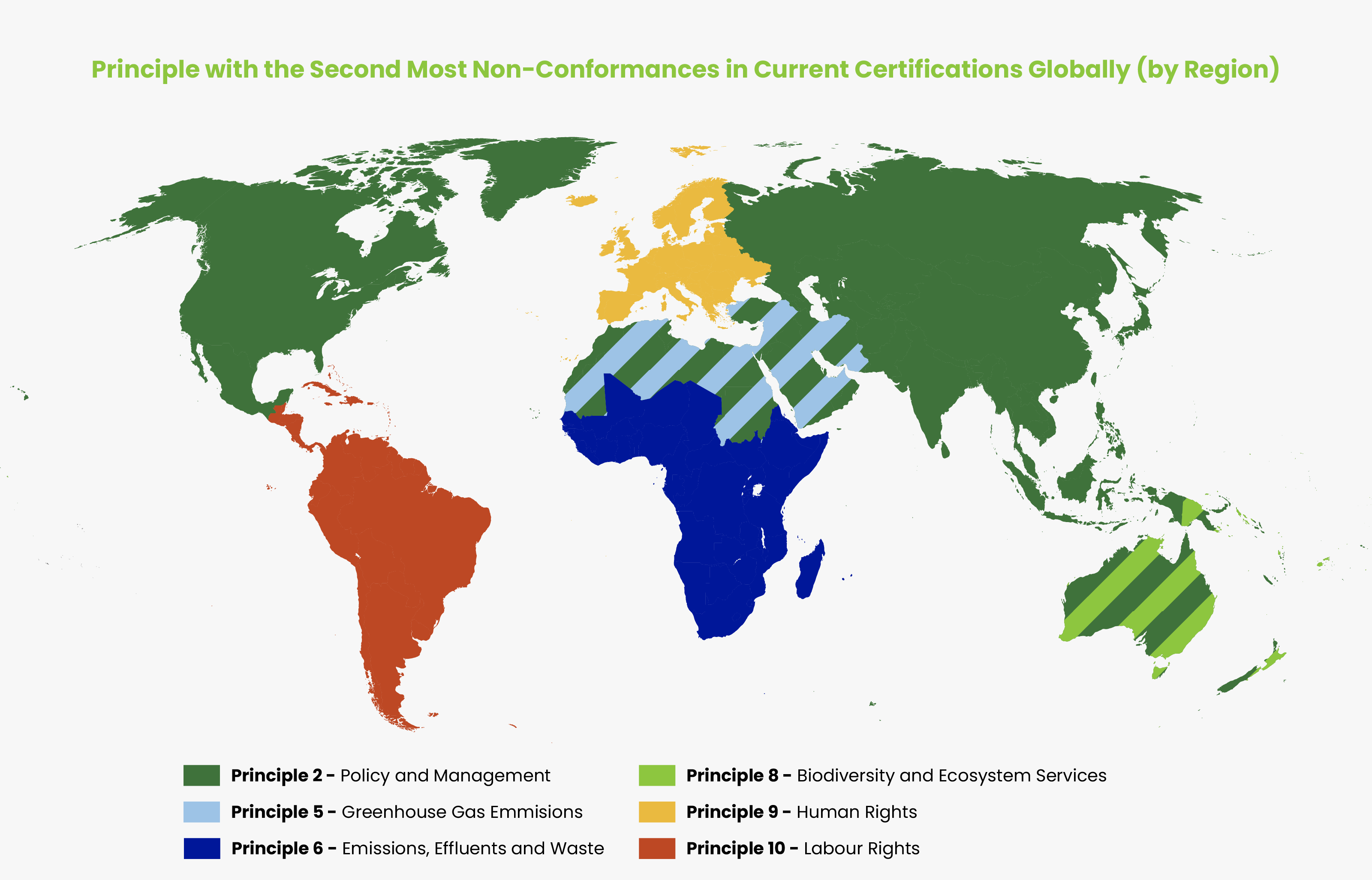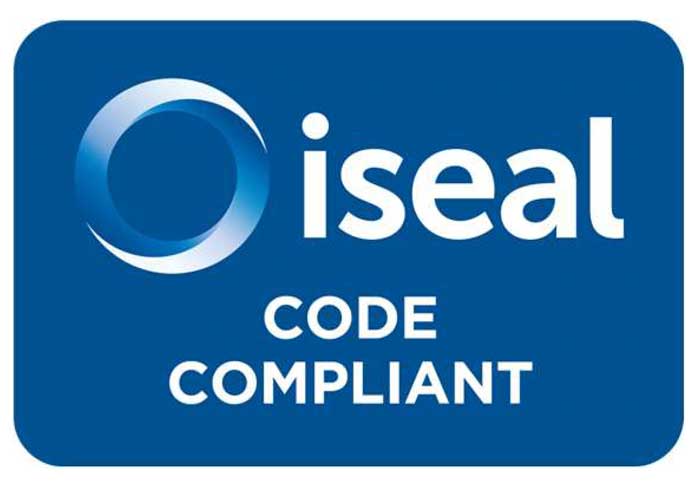10 Years of Impact: A Decade of Progress, A Moment of Insight: Regional Non-Conformances in Focus
As part of our 10 Years of Impact series, we examine how Non-Conformances vary across regions. These regional differences offer valuable insight into how sustainability challenges are distributed globally, and how the ASI Performance Standard is driving change in diverse contexts.
25 June 2025
This article provides a snapshot based on currently active ASI Performance Standard certifications. It captures the present state of implementation challenges, rather than a historical view over the full ten-year period.
Regional NCs by Principle with Highest Occurrence
Map 1 identifies the ASI Performance Standard Principle with the highest number of NCs recorded in each region. In five of the seven regions, the leading issue falls under Principle 9: Human Rights. With the introduction of ASI PS Version 3 in 2022, human rights-related criteria became more rigorous. This resulted in a noticeable increase in NCs across nearly all regions, regardless of their differing regulatory frameworks, highlighting that even in areas with existing protections, stronger standards can expose implementation gaps and drive accountability.
Two regions deviate from this trend:
- Europe shows the highest concentration of NCs under Principle 2: Policy and Management, particularly around responsible sourcing. This indicates that even in highly regulated markets, implementation challenges persist. The result runs contrary perhaps to the increasing regulatory focus on supply chain due diligence in Europe. This may be attributed to the fact that certifications often serve as lagging indicators, capturing practices in a moment in time, whereas much of the regulatory momentum in Europe is relatively recent.
- Latin America records the most NCs under Principle 6: Emissions, Effluents and Waste, with frequent issues related to water discharges, spill management, and waste control—often tied to the environmental impacts of bauxite mining operations, which are prevalent in this region.
Methodology
Analysis period: Up to 31 December 2024
Sample: All current ASI Performance Standard certifications Version 2 and Version 3
Total number of current ASI PS Certifications (V2 & V3): 295
Europe: 92; Asia: 97; North America: 26; Latin America (excl. Mexico): 10; Middle East and North Africa (MENA): 16; Sub-saharan Africa: 6; Oceania: 6
Note: In situations where operations of an Entity covered in a certification scope are present in more than one region, the certificate is counted under all regions.
This analysis reflects the current situation and includes only active ASI Performance Standard certifications. The dataset spans a range of maturity levels among certified Entities — from those newly certified (First Certification) to those that have achieved Re-certification to either Standard version. For Re-certified Entities, it is important to note that some Non-Conformances identified in earlier audits may have already been addressed and closed.

Map 1: Highest Principle with NCs recorded under current certifications across regions globally
Regional NCs by Principle with Highest Occurrence:
- North America: Principle 9 – Human Rights (31% of total NCs in North America)
- Latin America & Caribbean (excl. Mexico): Principle 6 – Emissions, Effluents and Waste (19%)
- Europe: Principle 2 – Policy and Management (17%)
- Sub-Saharan Africa: Principle 9 – Human Rights (33%)
- MENA: Principle 9 – Human Rights (22%)
- Asia: Principle 9 – Human Rights (28%)
- Oceania: Principle 9 – Human Rights (45%)
Regional NCs by Principle with Second Highest Occurrence
Map 2 presents the Principle with the second highest number of NCs in each region, highlighting how regional contexts shape sustainability priorities and risk exposure.

Map 2: Second highest Principle with NCs recorded under current certifications across regions globally
Regional NCs by Principle with Second Highest Occurrence:
- North America: Principle 2 – Policy and Management (19 % of total NCs in North America)
- Latin America & Caribbean (excl. Mexico): Principle 10 – Labour Rights (16 %)
- Europe: Principle 9 – Human Rights (16%)
- Sub-Saharan Africa: Principle 6 – Emissions, Effluents and Waste (14 %)
- MENA: Principle 2 – Policy and Management and Principle 5 – GHG Emissions (14 % each of total NCs in MENA)
- Asia: Principle 2 – Policy and Management (16%)
- Oceania: Principle 2 – Policy and Management and Principle 8 – Biodiversity (15% of each of total NCs in Oceania)
Taken together, these findings highlight the complexity of implementing sustainability standards across varied regional contexts. In resource-intensive regions like Latin America, environmental compliance remains a significant challenge, reflecting the ecological pressures associated with extractive activities such as bauxite mining. In Europe and Asia, a notable disconnect between policy and practice points to the difficulty of translating documented commitments into effective, system-wide implementation.
The variation in second-highest Non-Conformance areas, from biodiversity in Oceania to labour rights in Latin America, further underscores how regional priorities shape which sustainability issues are most material. Even in high-income regions with well-developed regulatory systems, such as Europe and North America, performance gaps persist. This demonstrates that strong governance frameworks do not automatically translate into full conformance without ongoing effort and effective implementation.
The data show how the ASI Performance Standard, while global in scope, drives change at the local level. Human rights emerge as a common challenge across all regions, but each faces its own implementation hurdles, shaped by geography, regulatory context, and position in the aluminium value chain. By addressing the full spectrum of sustainability issues, the ASI Performance Standard provides a unified framework for improvement, and as Non-Conformances are resolved over time, we gain insight into where meaningful progress is taking place on the ground
Previous analysis of Non-Conformances by Region
SHARE THIS ARTICLE


